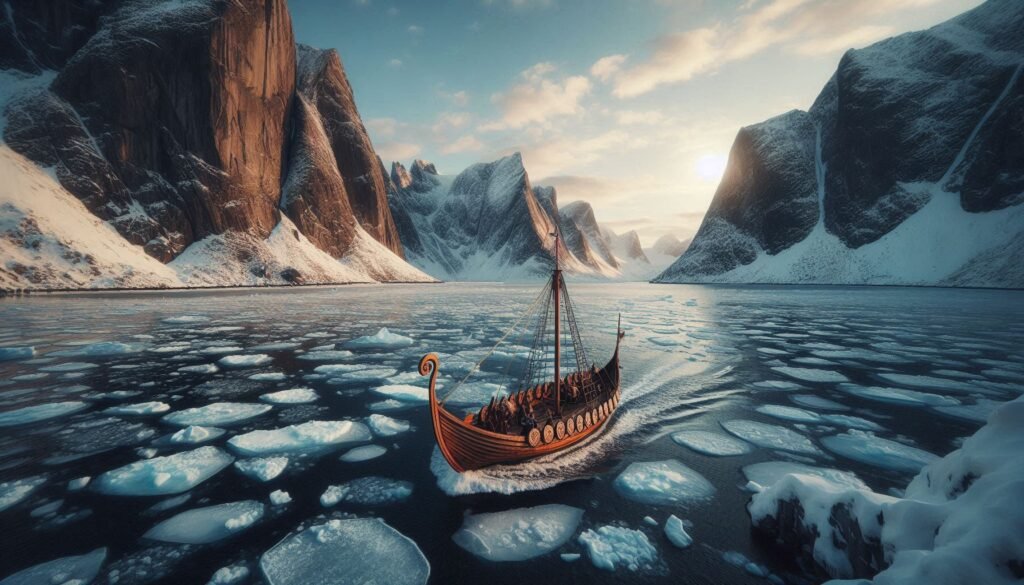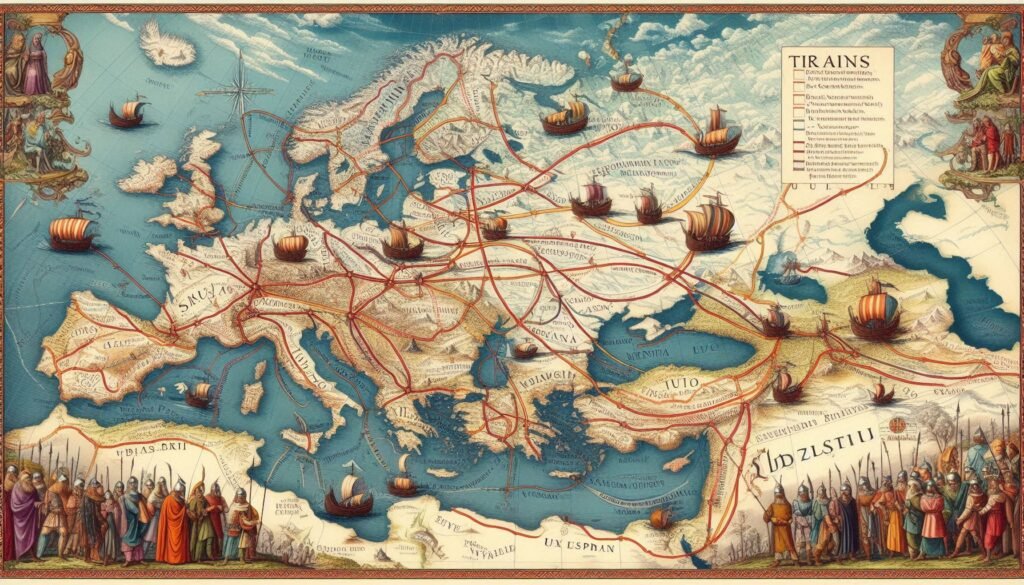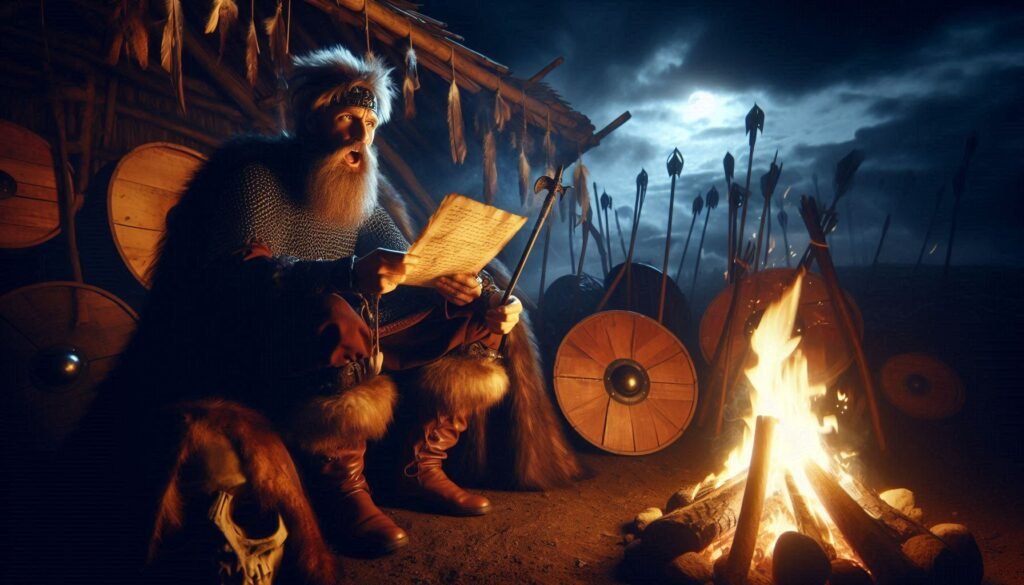Viking Culture: Warriors, Seafarers, and Storytellers of the North
“Cattle die, kinsmen die, all men are mortal. But I know one thing that never dies: the glory of the great dead.” – Hávamál
From the icy fjords of Norway to the windswept coasts of England and the rivers of Russia, the Vikings carved their mark into history—not just as raiders, but as traders, settlers, poets, and pioneers. Viking culture was a vibrant tapestry of honor, mythology, craftsmanship, and exploration. Fueled by a thirst for adventure and rooted in powerful traditions, their legacy echoes through time.
Homeland and the Call of the Sea

The Vikings hailed from Scandinavia—modern-day Norway, Sweden, and Denmark—a land of harsh winters, towering forests, and dramatic coastlines. Life in these regions demanded resilience and resourcefulness.
The sea was not a barrier but a highway. The sleek, agile longships allowed Vikings to travel vast distances, from North America to the Middle East. These vessels were masterpieces of engineering, blending speed, flexibility, and shallow drafts to raid, trade, and explore.
Society, Honor, and Daily Life
Viking society was structured but dynamic. At the top stood jarls (nobles), followed by karls (freemen), and thralls (slaves). Leadership was earned as much through prowess and loyalty as by birth.
Life centered around the longhouse, where families lived communally. Farming, fishing, metalwork, and trade were everyday tasks. Honor and reputation were the bedrock of Viking life—insults could lead to feuds, and bravery in battle brought lasting glory.
The Thing, a public assembly, was a cornerstone of governance where disputes were settled and laws passed. This tradition of participatory law hints at early forms of democratic practice.
Warfare, Strategy, and the Viking Warrior
Though known for their ferocity, Viking warriors were not mindless berserkers. They used disciplined formations, ambush tactics, and naval superiority. The iconic round shield, seax, spear, and battle-axe were favored weapons.
The concept of valhalla—a warrior’s paradise ruled by Odin—meant that death in battle was not feared but embraced as honorable. This belief inspired courage and fearlessness that baffled their enemies.
Raiding was only part of Viking warfare. They also served as mercenaries, such as the famed Varangian Guard of the Byzantine Empire, and defended their homelands with equal tenacity.
Exploration, Trade, and Settlement

Vikings were master navigators who used sunstones, stars, and landmarks to travel thousands of miles. They founded trade hubs like Hedeby and Birka, and settled lands far and wide—including Iceland, Greenland, and briefly, Vinland (North America).
They traded furs, amber, iron, and slaves for silver, silk, spices, and glass. Far from isolated barbarians, the Vikings connected northern Europe with distant cultures, including the Abbasid Caliphate and Kievan Rus.
Art, Craftsmanship, and Symbolism
Viking art blended form and function. Intricate designs of animals, interwoven patterns, and mythological motifs adorned weapons, tools, and household items. Their distinct styles—Oseberg, Borre, and Jelling—reflected cultural evolution and regional identity.
Metalwork, wood carving, and textile production were highly developed. Norse artisans created beautiful, durable goods that also carried symbolic power. Runes, the Viking writing system, were carved into stones and objects for communication, protection, and memorial.
Myth, Magic, and the Norse Worldview
Viking religion was a rich mythological system with gods, giants, spirits, and cosmic forces. Odin, Thor, Freya, and Loki were central figures in tales of wisdom, war, love, and chaos.
The Norse cosmos was structured around Yggdrasil, the world tree connecting nine realms. Seers, known as volvas, used magic and prophecy to guide communities. Rites, sacrifices, and seasonal festivals honored the gods and asked for their favor.
Even after Christianity spread in the 10th–11th centuries, Norse beliefs endured in folklore and rituals.
Sagas, Oral Tradition, and Storytelling

Before the written word, history lived through sagas—oral stories of gods, heroes, voyages, and vengeance. These epic narratives, preserved later in Icelandic texts, captured the soul of Viking culture.
Skalds were poets and chroniclers, composing in complex verse forms to honor kings, preserve memory, and teach moral lessons. These traditions gave the Vikings an enduring voice—and shaped how the world remembers them.
Legacy of the Northmen
Though their era ended, the Vikings’ influence did not. Their descendants helped shape the kingdoms of England, Ireland, Normandy, and Russia. Their maritime spirit inspired explorers for centuries.
Modern fascination with Viking culture continues through museums, festivals, books, and media. The Viking legacy lives not just in artifacts, but in ideals of exploration, resilience, and the unyielding human drive to shape the world.
“Better to fight and fall than to live without hope.” – Norse proverb
